
Herrnhaag (Lord's Grove) was a communal spiritual centre for the Moravian Unity, an early form of Protestantism. It and Marienborn, a nearby sister community, are located in the Wetterau, an area of Hesse, north of Frankfurt am Main in Germany.

Herrnhaag (Lord's Grove) was a communal spiritual centre for the Moravian Unity, an early form of Protestantism. It and Marienborn, a nearby sister community, are located in the Wetterau, an area of Hesse, north of Frankfurt am Main in Germany.
“Herrnhaag was designed to express the Moravian ideal before it was built” [1] and served a unique purpose: it was planned as the House of God. There were to be twelve gates following the description of New Jerusalem in Revelation. In the center was the well of the water of life also recalling Revelation: “Then the angel showed me the river of the water of life, bright as crystal, flowing from the throne of God and of the Lamb through the middle of the street of the city” (Revelation 22:1).
According to church leader Nicolaus Ludwig von Zinzendorf, who planned the community, the Moravian Unity anticipated “the end time when the heavenly reality would become the total reality.” [2] Living in that end time was the purpose of Herrnhaag, which was designed to be the residence of Christ. According to Zinzendorf, “We have [the Holy Spirit’s] care to thank for the fact that we are brought here together, that we dwell in a Mother-city.” [3]

During exile from the family estates in Saxony, Zinzendorf began negotiating for Marienborn as a residence for what was called the Pilgrim Congregation. Before it was available, he brought his family to stay at the Ronneburg, a dilapidated castle in the area. Eventually the Zinzendorfs moved into Marienborn and construction of Herrnhaag began in 1738. The community was unfinished at the time of its abandonment in the early 1750s.
Community members lived under the direct rule of Christ as the community’s chief elder and shepherd. Herrnhaag was the church’s fastest growing settlement and the one most criticized for heresy.
The community’s focal point was the great hall, the Saal, the place of ritual and worship. The Saal was built on two levels, with a balcony overlooking the main floor, representing earthly reality below and the heaven reality above. The festivals held in the Saal provided a multimedia effect on worshippers resulting from the combination of illuminations, music, ritual, paintings and pageantry.

The cantata written for the dedication of Herrnhaag’s Single Brethren’s House in 1739 shows how community residents looked upon their lives as dedicated to Christ “You know how much we cherish you, most magnificent of all gifts! Precious offering of grace from above! Bless the sacred marriage. Bless the sacred virginity . . . the young men’s strength will be gathered for knighthood in your service . . . This house shall become, and those that live therein, your glorification here on earth!” [4]
As with other Moravian communities, living arrangements were based on the separation of members according to age, marital status and gender into so-called choirs. Each choir had its own festivals. The festival of the Single Brothers at Herrnhaag in 1748 included the glorification of Christ's sidehole wound, considered sacred because it represented Christ's compassionate, sacrificing love. Christian Renatus von Zinzendorf, Nicolaus Ludwig's son, led the ceremony making it clear that he literally had become the sidehole of Christ and when he embraced the men, they were embraced by the sidehole. [5] There was also a pictorial representation of the sidehole large enough that each man could enter and pass through it. In this way the men understood they were becoming one with Christ.
What was condemned as heretical by many towards events at Herrnhaag was the blending of the sexual and the spiritual, the human and the divine. Based on writings of Christian Zinzendorf proclaiming all souls to be female, the brothers were proclaimed by Christian Renatus to actually be female and therefore eligible to be brides of Christ who could be entered and filled. There is some evidence that they practiced this literally among themselves and perhaps between the sexes as well, though one should be careful to make conclusions, as the times of Count Zinzendorf were immersed in slander and defamatory libels, of whose it is difficult to ascertain truth and false (a famous example is Voltaire's "Vie privée du roi de Prusse"). Original sources should be a primary source. Of such, Count Zinzendorfs "Anhang, als ein zweiter Theil zu dem Gesang-Buche der Evangelischen Brüder-Gemeinen" (Addition, as a second part to the song-book of the evangelical brother-congregations), S. I. [1745], [6] was often referred to in the contemporary controversies, [7] and an example can be given here of a scandalous and possibly promiscuous and blasphemous passage (page 2016, original orthography): No. 2143, "Zum 2. Julii 1745", 2. Verse (of the Lamb, Christ): "Das weibliche geschlecht hat den respect und recht, zu tragen deine seelen in solchen leibes-hölen, die dich als GOtt empfangen, daraus du menschlich gangen (The female sex have the respect and right, to bear thy soul in such body-holes, which thy as God received, from there out you humanly went)". In 1748, Alexander Volck, a lawyer and of public station in the nearby town of Büdingen, started to publish books (first anonymous, then under his own name) [8] about the promiscuities and also diverse about Count Z. himself, e.g. that he traveled with his mistress, Anna Nitschmann (1715 - 1760) in their own luxurious horse-carriage. The publication of these books caused great stir, and is probably a main reason why the Count suddenly in the same year moved to London, of a fear he might be arrested by the authorities in Büdingen.
Many within and without the church were scandalized by rumors of such behavior and Ludwig von Zinzendorf finally decided to take action, threatening to whip those involved. [9] Christian and others were called to Lindsey House outside London where Nicholas was living.
The residents of Herrnhaag began dispersing after this. In addition to the bad publicity, Herrnhaag and its festivals were a financial drain on the church. But the decision to actually close the settlement was the result of the new local ruler, Gustav Friedrich Count of Ysenburg-Büdingen, who demanded that the Moravians abjure Nicolaus Ludwig von Zinzendorf and swear fealty only to himself. Every one of the residents refused to comply, and began to emigrate in 1750, and the community was abandoned by 1753.

In the latter twentieth-century Herrnhaag was resettled as a Moravian commune and restoration work was begun on the Lichtenburg, the "Fortress of Light", containing the Saal worship hall and the rooms where Count Nicolaus Ludwig von Zinzendorf had lived, and the Sisters' House. As of 2009, other buildings are privately owned such as the Single Brethren's House, where Christian Renatus lived, which is now a farm house. The community well remains in the center of the property.
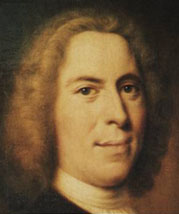
Nikolaus Ludwig, Reichsgraf von Zinzendorf und Pottendorf was a German religious and social reformer, bishop of the Moravian Church, founder of the Herrnhuter Brüdergemeine, Christian mission pioneer and a major figure of 18th century Protestantism.

Herrnhut(listen) is an Upper Lusatian town in the Görlitz district in Saxony, Germany, known for the community of the Moravian Church established by Nicolas Ludwig, Count von Zinzendorf in 1722.

Berthelsdorf is a former municipality in the district of Görlitz, in the southeastern part of the Free State of Saxony, Germany. On 1 January 2013, it was incorporated into the town of Herrnhut.
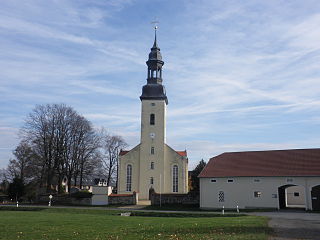
Großhennersdorf is a village and a former municipality in Görlitz district, Free State of Saxony, Germany. Since 1 January 2011, it is part of the town Herrnhut. The Bundesstraße 178 connects Großhennersdorf with Löbau and Zittau.

The Moravian Church, or the Moravian Brethren, formally called the Unitas Fratrum, known in German as the [Herrnhuter] Brüdergemeine [sic], is one of the oldest Protestant denominations in the world, dating back to the Bohemian Reformation of the 15th century and the Unity of the Brethren founded in the Kingdom of Bohemia.

Ronneburg is both a castle and a municipality in the district of Main-Kinzig, in Hessen, Germany. The town is most notable for being the site of Ronneburg castle.

Saalburg-Ebersdorf is a town in the Saale-Orla-Kreis district, in Thuringia, Germany close to the Bavarian border. It is situated on the river Saale, 10 km southwest of Schleiz, 30 km west of Plauen and 30 km north-west of Hof.

Peter Boehler, born Petrus Böhler, was a German-English Moravian bishop and missionary who was influential in the Moravian Church in the Americas and England during the eighteenth century.

The Moravian Church of the British Province is part of the worldwide Moravian Church Unity.

Imperial Count Christian Renatus von Zinzendorf und Pottendorf was the charismatic leader of the Single Brethren's Choir of the Moravian Church and of Herrnhaag, a Christian religious community built near Büdingen by his father, Count Nicholas Ludwig, head of the Brüdergemeine or Moravian Unity. Christian Renatus, affectionately known as Christel, took his father’s marriage religion (Ehereligion) literally, proclaiming himself to be the living "Sidewound of Christ" in 1748, which meant he was the embodiment of Christ's sacrificial and compassionate love.

Christiansbrunn is the name of two communities established in Pennsylvania.
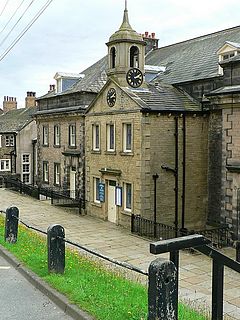
Fulneck Moravian Church and its associated settlement were established on the Fulneck estate, Pudsey, in the West Riding of Yorkshire, England, in 1744 by Count Nicolaus Ludwig von Zinzendorf, a Moravian Bishop and Lutheran priest, following a donation of land by the evangelical Anglican clergyman, Benjamin Ingham. Fulneck is now part of the City of Leeds, West Yorkshire.

The Moravian Burial Ground is the burial ground of the Moravian Congregation in London.
Zinzendorf is a surname. Notable people with the surname include:
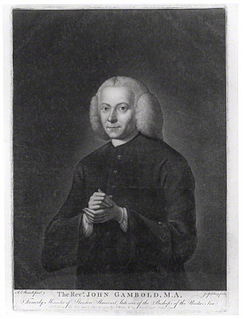
John Gambold, was bishop of the Unitas Fratrum.
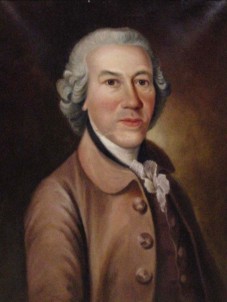
Heinrich XXIX, Count of Reuss-Ebersdorf was a member of the House of Reuss Younger Line and Count Ebersdorf from 1711 until his death

Johann Leonhard Dober was, along with David Nitschmann, one of the two first missionaries of the Moravian Brethren in the West Indies in 1732.

Erdmuthe Dorothea, Countess of Zinzendorf, née Countess of Reuss-Ebersdorf was a German Pietist and hymn writer.
Alexander Volck was the city scribe for the Wetteravian town of Büdingen in Hesse, Germany during the mid 18th century. He was, for a time, a member of the Moravian Church, but eventually left the church and became one of its most vociferous critics; authoring The Revealed Secret of the Malice of the Herrnhuter Sect, seven volumes printed between 1748–1751, which attacked Nicolaus Zinzendorf and the Moravian Church.
Benigna Zinzendorf, also known as Henrietta Benigna Justine Zinzendorf von Watteville (1725–1789), was the founder of the first boarding school for girls in the British American colonies, which became Moravian College. She was a missionary among Native Americans and assisted her father, Count Nicolaus Zinzendorf, and her husband, Bishop Johannes Langguth, in their religious activities in Europe and America. She enjoyed music and was an Eldress to girl's choirs beginning at the age of 14 and was a leader in an adult choir after she was married.